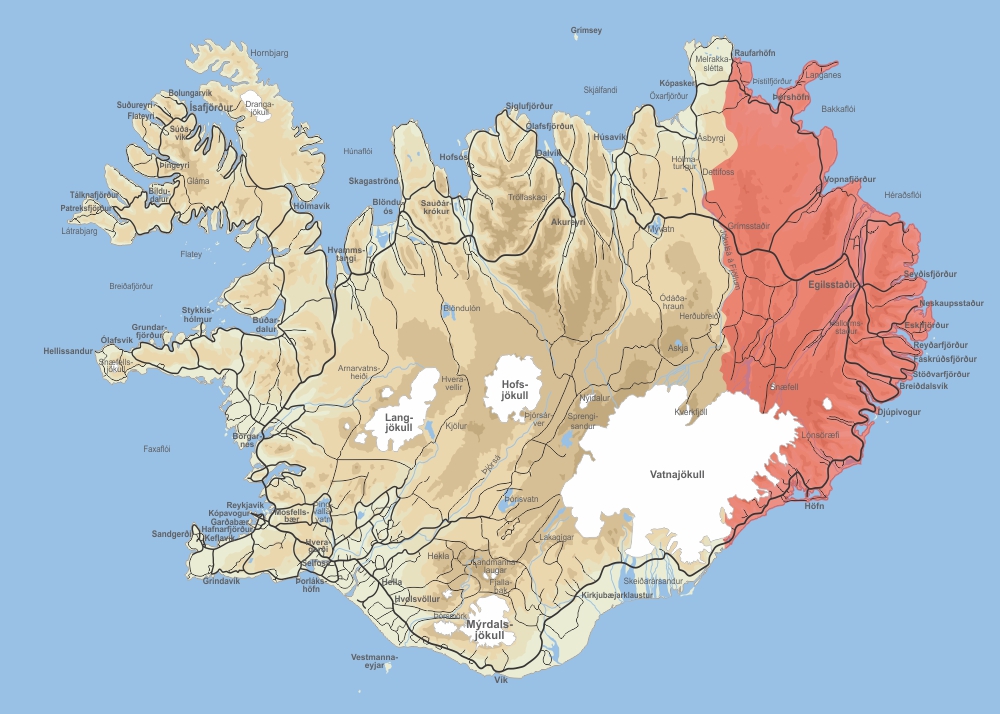The Icelandic Ministry of the Environment, Energy, and Climate has announced the reindeer hunting permits for 2024. Following proposals from the Environment Agency, the Minister has set the quota at 800 reindeer (Rangifer tarandus), comprising 397 cows and 403 bulls.
This marks a reduction of 101 reindeer compared to the previous year. The decrease this year is attributed to a lack of data on population growth and presence due to a fatal accident during a reindeer count in Sauðárhlíð in June 2023, where the leading scientists in the field tragically died in a plane crash.
The reindeer hunting quota in Iceland has been steadily decreasing over the past few years:
- 2023: 904 animals (475 cows and 429 bulls)
- 2022: 1,021 animals (546 cows and 475 bulls)
- 2021: 1,220 animals (701 cows and 519 bulls)
- 2020: 1,325 animals (805 cows and 520 bulls)
- 2019: 1,451 animals (1,043 cows and 408 bulls)
- 2018: 1,450 animals (1,061 cows and 389 bulls)
The annual issued hunting quota is divided between nine hunting areas and based on the number of animals of each gender.
Hunting Season Dates and Guidelines
- Male Reindeers (Bulls): July 15 - September 15
- Female Reindeers (Cows): August 1 - September 20
There are strict regulations regarding reindeer hunting in Iceland. Every hunter needs to have a licensed guide with them on the hunt and each permit allows the hunter to shoot only one reindeer. To minimize the impact on calves, hunters are instructed to avoid killing milk cows during the first two weeks of the season, focusing instead on castrated cows. Additionally, hunting calves and winter-old bulls is prohibited; only bulls aged two years and older may be hunted.
The Environment Agency advertises and handles the sale of all hunting permits for reindeer in Iceland. The number of applications always greatly exceeds the available permits.
Historical Background on Icelandic Reindeer
Reindeer are unique among cervids as both males and females grow antlers. Widely adapted to cold climates, they are found across the northern hemisphere in regions such as Russia, North America, Canada, Alaska, and Scandinavia. Reindeer were introduced to Iceland in the 18th century to establish a stock for agricultural use, similar to Lapland. Despite initial challenges including harsh winters and limited food supplies, the population persisted in East Iceland.
By 1939, reindeer were thought to be nearly extinct in Iceland until approximately 100 were discovered in East Iceland. The current population, estimated at 6,000 to 7,000, is believed to be descended from these survivors. Reindeer in Iceland are primarily found in the eastern regions, particularly around the Snæfell mountain during summer. They migrate to lower altitudes in winter, often seen near Vopnafjörður and Jökulsárlón Glacier Lagoon.
Adult male reindeer in Iceland typically weigh around 90 kilograms, while females average 40 kilograms. Their grey and white fur provides excellent camouflage and insulation, allowing them to maintain stable body temperatures even in extreme cold. Their diet includes a variety of plants, with a preference for lichen. Despite concerns overgrazing impacts, reindeer have a lesser effect on pastures compared to sheep.
Conservation and Hunting Regulations
Under Icelandic law (No. 64/1994), all wild mammals except mink, mice, and rats are protected. However, reindeer receive special consideration, with annual hunting quotas based on population assessments. The reindeer hunting permits are issued each year to both local and international hunters, managed by the Environment Agency of Iceland.
This year’s hunting season reflects a careful balance between tradition, conservation, and safety, ensuring sustainable reindeer management in Iceland's unique ecosystem.
Source:Stjórnarráð Íslands
Related news:
Sustainable reindeer hunting in Iceland
Flying barbeque helps reindeer herders
Reindeer herders in Rome: all roads lead to the FoodLab
The tags below provide an opportunity to view previously posted related news within the selected category


